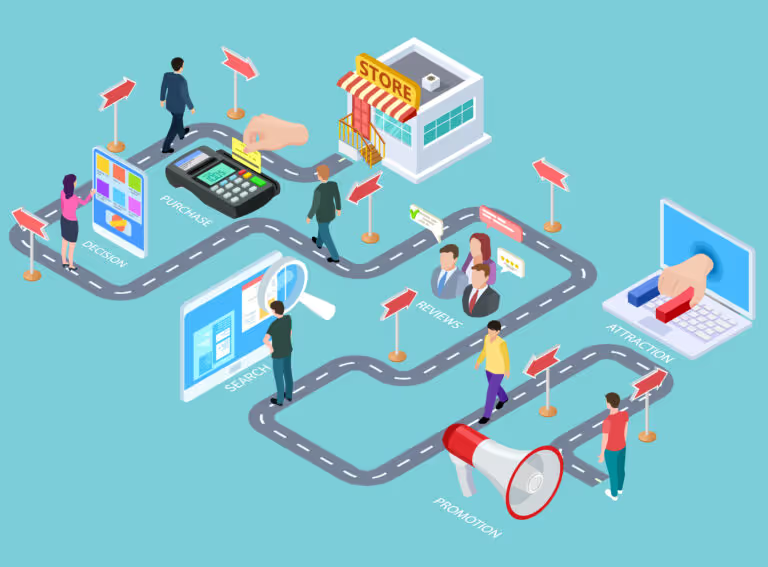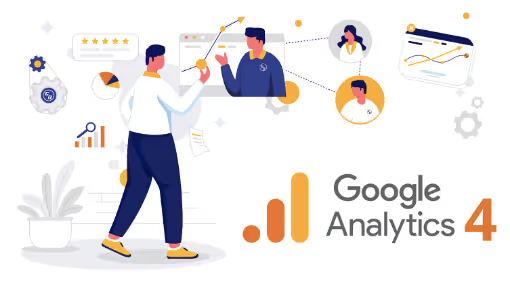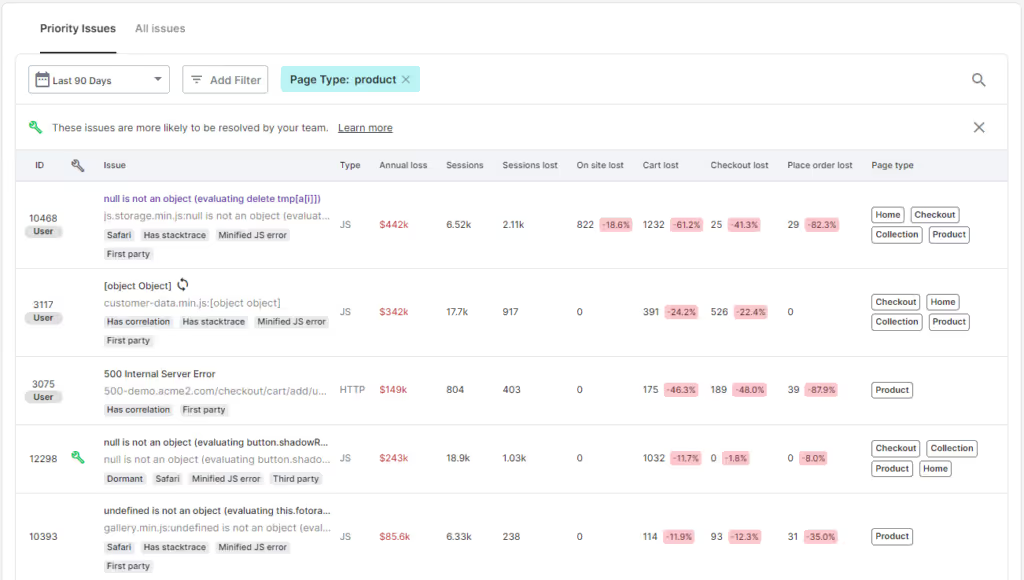How to use funnel analytics to increase conversions and grow your ecommerce business

In today's highly competitive ecommerce landscape, the ability to drive conversions is crucial for the success and growth of any online business. In that context, conversions, whether they involve purchases, sign-ups, or any other desired action, are the ultimate goal of every ecommerce team.
However, thoroughly understanding the complex journey that customers take from the initial website awareness to the final conversion and why they act how they act in given situations and places can be a daunting task.

Let’s put this into perspective. Despite all the time and hard work that you and your team have spent perfecting your conversion funnel, visitors just flow through your ecommerce site each day but all of the traffic funnels down to just a trickle of sales, signups, and conversions. Sounds familiar? In all likelihood, probably, yes. Is there a way to address this issue? Also, yes.
This is where funnel analytics and website funnel analysis come into play. Funnel analytics help ecommerce teams thoroughly understand how real customers shop online by providing next-level insights into the entire customer journey. This way, ecommerce team leaders and their personnel can identify vital opportunities for optimization and growth by optimizing their conversion funnels to reflect each visitor’s unique customer journey.

In the following sections, we will delve deeper into funnel analytics and explore how the proper utilization of this valuable tool can increase conversions and propel your ecommerce business forward.
Setting up funnel analytics for your ecommerce website
To effectively leverage funnel analytics and website funnel analysis, first, CCOs and their dedicated teams need to set up tracking and define their funnel goals and key performance indicators (KPIs).
Defining your funnel goals and KPIs
Defining these will provide a framework for tracking and measuring your funnel and conversion performance. Here are a few steps to follow along the process:
- Identify your primary conversion goals. Identify the main actions you want your website visitors to take. For example, it could be purchasing, signing up for a newsletter, or completing a contact form. These goals will serve as the key milestones in your sales funnel.
- Break down your funnel into stages. Map out the various stages that customers typically go through before reaching the conversion point. These stages usually include awareness, consideration, and decision-making. For instance, many online shoppers might be visiting the homepage of your ecommerce store, but only a few really see the “thank you” page after purchase. If you break down your funnel conversion path, it would look like this: homepage→category page→product page→cart→checkout→thank you page. Understanding the funnel path will help you track user progression and identify areas for improvement.
- Assign KPIs to each funnel stage. Once you have defined your funnel stages, determine the relevant KPIs for each stage. For instance, you might track metrics like website visits, page views, and social media engagement at the awareness stages. At the consideration stage, you could focus on metrics such as product views, cart additions, and wish list interactions. Finally, at the decision-making stage, key metrics may include conversion rate, average order value, and checkout abandonment rate. Assigning specific KPIs will allow you to measure progress and identify areas that need attention.
Set specific and measurable targets. Establish clear targets for each KPI based on your business objectives. These targets should be specific, measurable, attainable, relevant, and time-bound (SMART). For example, you may aim to increase the conversion rate by 8% within the next quarter or reduce cart abandonment by 3% over the next month.

Defining your funnel goals and KPIs lays the foundation for effectively implementing funnel analytics. Now, because this article is focused on using the proper funnel analysis in order to increase conversions and grow the revenue of your ecommerce business, let’s see how your ecommerce team can use the website conversion funnel analysis to monitor funnel performance, diagnose funnel issues, and identify funnel opportunities.
Using funnel analytics to increase conversions and grow your business
Now that you have set up funnel analytics and defined your goals, it's time to leverage the power of this data to increase conversions and drive growth for your ecommerce business. Here are two critical strategies for utilizing sales funnel analytics effectively:
How to use funnel reports and dashboards to visualize and monitor your funnel performance
Funnel reports and dashboards visually represent your funnel performance, allowing you to monitor and assess the effectiveness of your marketing and conversion optimization efforts. Here's how you can utilize these tools:
- Choose the right analytics platform. Select an analytics platform that offers funnel visualization capabilities, such as Noibu or Google Analytics. For instance, Google Analytics 4, or GA4, is the latest Google product that allows for app and web data to be collected separately or in a single continuous property. The latest analytics platform is designed to replace both UA and GA360 by the end of 2023. All these analytics platforms provide users with pre-built reports and customizable dashboards specifically designed to track and analyze the funnel data and use it to their advantage.
- Set up funnel visualizations. Configure your analytics platform to generate funnel reports based on the stages you defined earlier. These reports will illustrate the progression of users through your funnel, indicating where they drop off and identifying potential areas for improvement.
- Monitor key funnel metrics. Pay attention to key funnel metrics, such as conversion rates at each stage, drop-off points, and overall funnel performance. Regularly review these metrics to track progress toward your goals and identify any anomalies or trends that require attention.
- Create customized dashboards. Customize your analytics platform's dashboard to display your ecommerce business's most relevant metrics and KPIs. This way, you can have an at-a-glance view of your funnel performance and make informed decisions based on real-time data.

How to use funnel analytics and insights to identify and diagnose funnel issues and opportunities
Funnel analysis provides not only visualization but also deep insights into your customer journey. Here's how you can utilize funnel analysis and insights to uncover issues and opportunities within your sales funnel:
- Analyze drop-off points. Review your funnel analytics to identify the stages where users drop off the most. By understanding the reasons behind drop-offs, such as confusing checkout processes or lack of information, you can address these issues and optimize the user experience.
- Segment your data. Break down your funnel data by different segments, such as traffic sources, demographics, or device types. This segmentation allows you to identify patterns and preferences among different user groups. By tailoring your marketing and optimization strategies to specific segments, you can improve conversions for each group.
- Perform A/B testing. Implement A/B testing on different elements of your funnel, such as landing pages, calls-to-action, or checkout processes. You can make data-driven decisions to optimize your funnel for maximum conversions by comparing different versions and analyzing the impact on conversion rates.
- Leverage behavioral analytics. Use advanced behavioral analytics tools to gain insights into user interactions, such as mouse movements, click heatmaps, or session recordings. These tools help you understand how users navigate through your website, identify usability issues, and make data-informed improvements.
By leveraging funnel analysis and insights, you can uncover hidden opportunities, diagnose funnel issues, and implement targeted strategies to drive conversions and grow your ecommerce business.
Using Noibu to track funnel statistics and identify the issues with most revenue loss to grow your ecommerce business
Noibu is a powerful tool that monitors your ecommerce website and can help you flag errors in real time. One of the many features that Noibu puts on the table for ecommerce teams is that it can also help you track funnel statistics and identify issues that result in revenue loss for your ecommerce business. As a result, by leveraging and harnessing the power of Noibu, you can gain valuable insights into user behavior and address critical issues that hinder conversions.
Funnel statistics
Noibu's funnel feature tracks the customer's buying process across four primary phases:
- On-site
- Add-to-cart
- Checkout started
- Order placement.
For each phase, the funnel statistics view summarizes unique sessions and the number of sessions that successfully progressed to the next phase within a specified time frame. For example, you can customize the timeframe for data retrieval, such as the past day, seven days, 14 days, 30 days, or 90 days.

Noibu's funnel feature also provides insights on sessions lost and transactions lost at each phase. Sessions and transactions lost are distinct only in the on-site and add-to-cart phases. In later stages, transactions lost encompass the natural drop-off attributed to errors encountered in earlier phases.
It is expected to experience some drop-off at each phase of the buying process. By gathering data and computing an average conversion rate, the funnel statistics view determines the number of sessions and transactions lost due to website issues. Furthermore, it estimates the potential revenue loss at each phase if these issues are not addressed.
Issues with most revenue loss
The "issues with most revenue loss" feature is a valuable funnel analysis tool that allows you to prioritize your debugging efforts by pinpointing the issues that have the most significant impact on your revenue. As the funnel statistics view, you can customize the timeframe, such as the past day, seven days, 14 days, 30 days, or 90 days, to gather relevant data.

In the "issues with most revenue loss" view, user-impacting issues verified by your team or Noibu support appear at the top. In contrast, uncategorized problems are ordered by projected revenue loss. Addressing both types of issues is crucial for improving user experience and minimizing revenue loss.
With Noibu's funnel analysis features, you can filter the table of issues by any column, and you can freely customize which columns appear in the table by opening the menu. The available filters include urgency, assignee, state, label, OS, browser, resolution likeliness, impact, annual revenue loss, leads lost, users impacted, created at, last seen, closed fixed at, error type, error source, page type, and analytics period.




